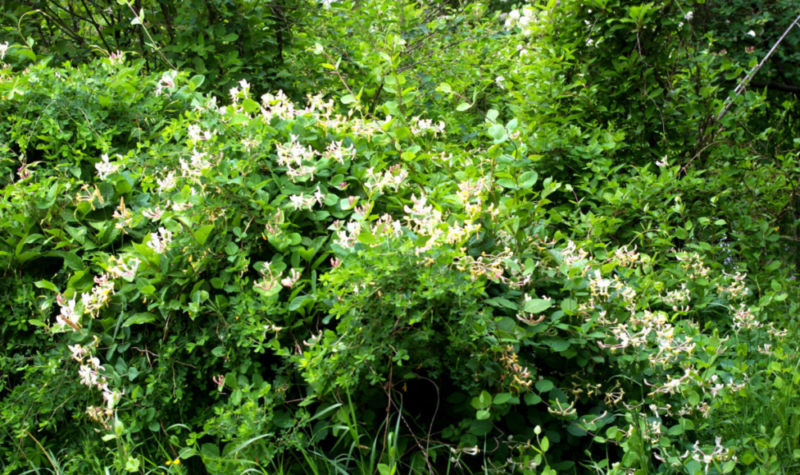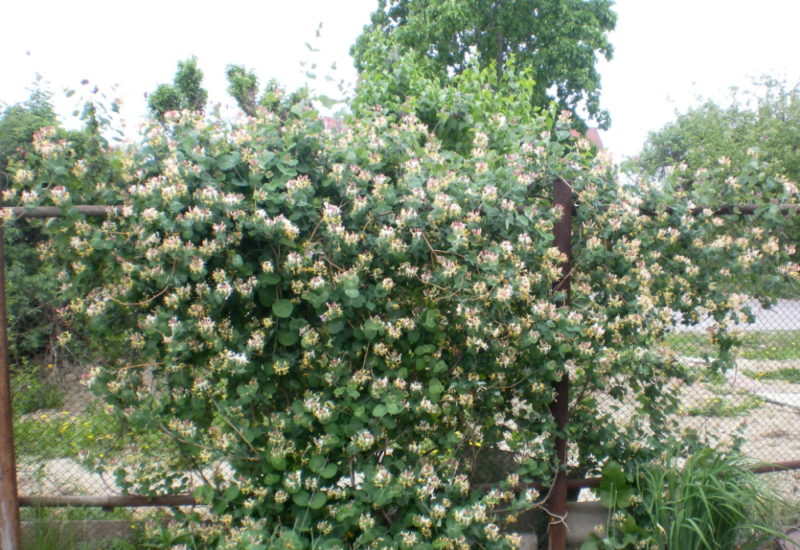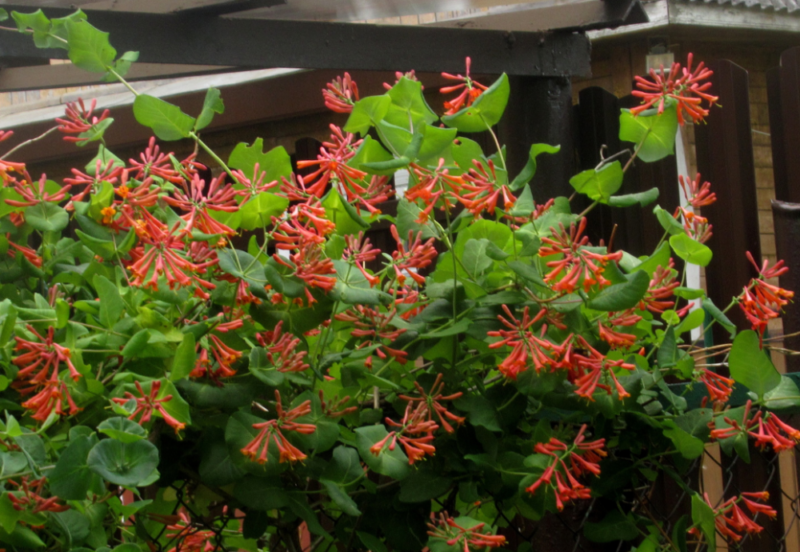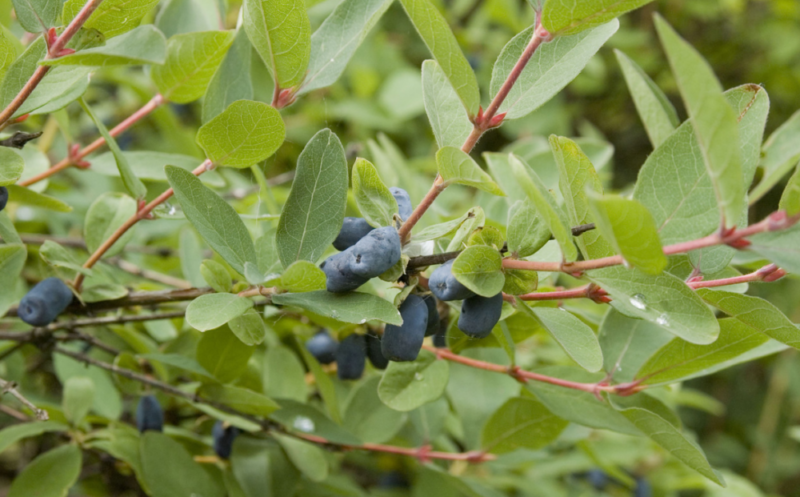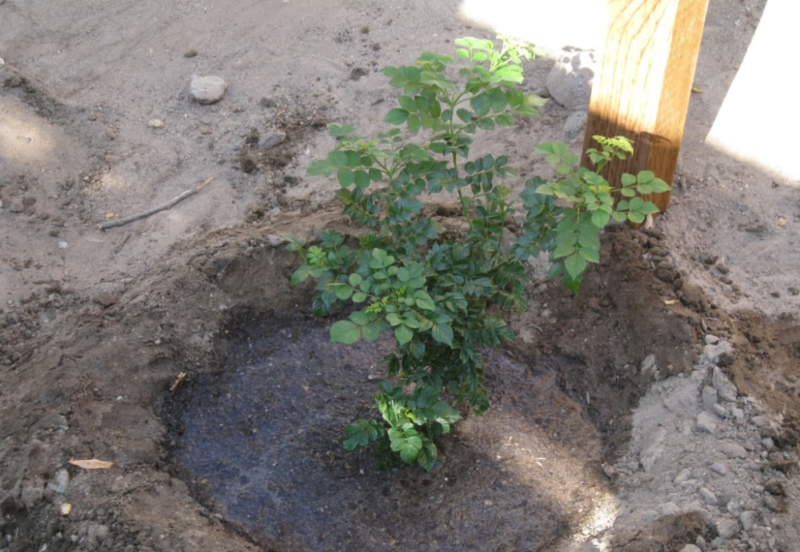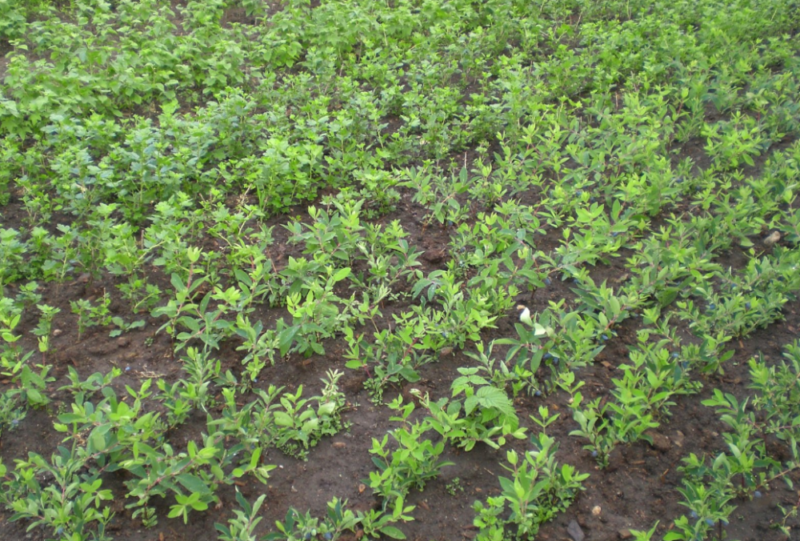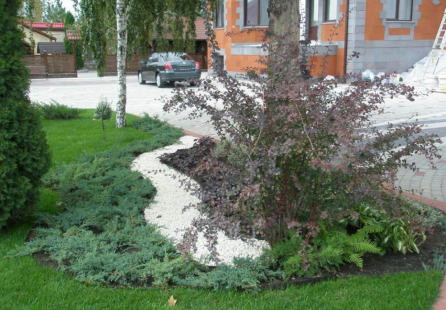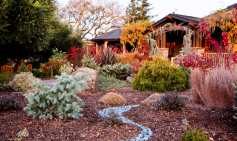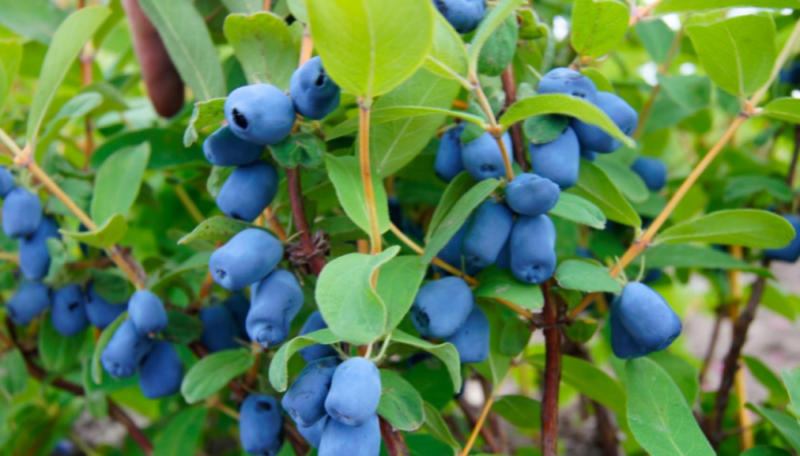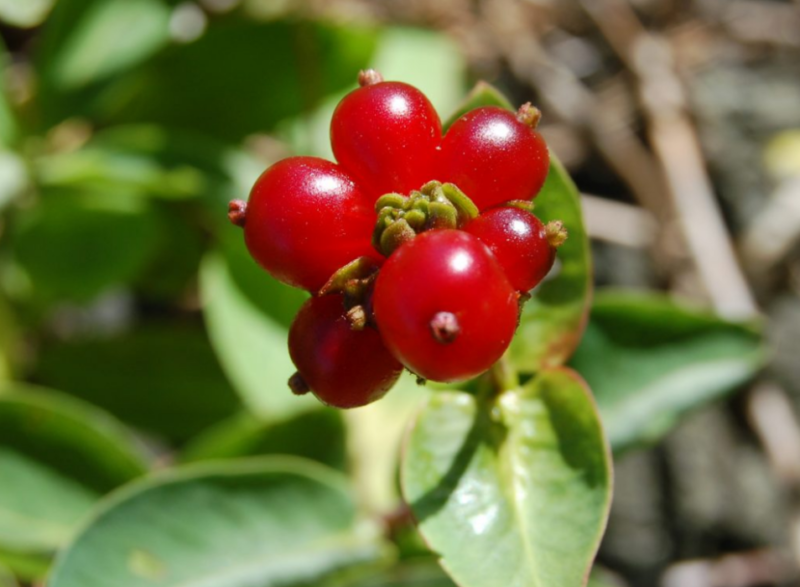Ornamental honeysuckle is a climbing or upright plant commonly used in garden plots to decorate vertical surfaces. Due to its unpretentious care, resistance to frost and spectacular flowering, honeysuckle is deservedly loved by many gardeners. Subject to simple rules of care, this plant is able to delight the eye for up to forty years.
Material Content:
Varieties of decorative honeysuckle with a photo and description
For planting in open ground on a personal plot, you can choose almost any kind of honeysuckle, all of them are well adapted to various conditions and have excellent decorative qualities.
So, let's get acquainted with the main types of decorative honeysuckle and a list of varieties.
Creeper (curly) honeysuckle
It is recommended to plant these types of honeysuckle for vertical gardening of terraces, hedges and arches. They can reach a height of 6 meters, maintain a pleasant appearance throughout the warm season. From June to August, flowering occurs, and then bright, beautiful fruits ripen.
Honeysuckle Honeysuckle. This honeysuckle variety has been known since ancient times. It is even known that Karl Linnaeus proposed to call this genus of plants precisely “honeysuckle”. Honeysuckle has lush foliage, blooms profusely in neat flowers of a pinkish hue. Honeysuckle flowers of this variety have a very strong pleasant aroma that invariably attracts night butterflies. One of the most beautiful varieties of honeysuckle is Graham Thomas, with cream-colored flowers that turn into rich yellow, with delicate and delicate petals.
Brown Honeysuckle. This variety has not only dense and decorative foliage, but also an interesting, vibrant shade of flowers. It can range from deep scarlet to bright orange. It has a soft, unobtrusive aroma, flowering begins in June and is repeated again in late summer.
Curly honeysuckle. One of the most decorative varieties. The flowers are two-tone, pleasant warm shades (pink or red) outside, and closer to the core - pale pink or yellowish. There are interesting combinations, for example, the Munster variety bred by breeders has white flowers with a red border. The fruits are very decorative, bright orange.
Bush honeysuckle
Honeysuckle of this species can be either edible or exclusively decorative. It is used to make tracks, as a hedge or planted on curtains.
Altair. This is a variety of edible honeysuckle, while possessing excellent decorative qualities: its bright blue fruits of even shape can be not only a pleasant delicacy, but also a decoration of the garden. The variety is very unpretentious and suitable for growing even for those who can not devote much time to the garden. Blooms early, by June begins to bear fruit.
Honeysuckle Korolkova - This is another wonderful representative of the bush species of the family Honeysuckle. A distinctive feature is a pleasant and gentle tone of the leaves, giving a bluish color, and pale pink flowers. Hedges are best made from this variety.
Tatar honeysuckle. The height of this shrub can reach four meters, it is considered one of the most unpretentious, surprisingly resistant to severe frosts and severe drought. Flowering begins three years after planting, flowers can be of various shades: from pure white to rich purple.
Outdoor landing
Honeysuckle is usually planted in spring or September. The southern area of the garden is ideal. The planting site should be protected from strong drafts, it is advisable to place seedlings away from groundwater.
The plant loves the sun, however, it is not considered too whimsical and can tolerate the shadow well.
A little trick for gardeners: in order to avoid quick drying of the roots of honeysuckle, several bushes of geraniums or heichera can be planted near the base of the plant.
The composition of the soil must be complete, acidity and humidity are average, good drainage is recommended.
To achieve plentiful beautiful flowering, it is necessary to plant several plants at once nearby from each other - this will help pollination and the development of new flowers.
Step-by-step landing process:
- It is necessary to prepare several pits of medium depth at a distance of 40-50 centimeters (for bush varieties) to 2 meters (for vines).
- At the bottom of the pits, a mixture of sand with compost is placed, a little lime and universal mineral fertilizer, well interfere in the soil.
- It will be necessary to water the soil well, after which the seedling is placed, trying to straighten and not damage the root system.
- They fill the hole with soil, level and compact. If planting is done in hot weather, it is best to pritat a plant a little.
In the first 2-3 years, plants are not pruned - this can significantly slow down the growth and development of honeysuckle.
How to care for a plant
Caring for the honeysuckle is not very difficult; it is even possible for those who have modest experience in gardening.
Watering should be moderate, careful - the plant does not like a large amount of liquid, it is necessary to ensure that there is no rotting of the roots and waterlogging of the soil. If the summer turned out to be cool, with precipitation, then additional watering will be required no more than once a month.
Top dressing begins to be applied only in the third year after planting. They use ammonium nitrate, which is placed under the roots in early spring (usually directly on snow) and humus in early summer.Complex fertilizers are suitable, preferably without a high nitrogen content. In the fall, fertilize with a small amount of ash.
Honeysuckle is not trimmed in the first few years, otherwise the plant will cease to bloom profusely. Only careful removal of dying shoots is recommended. At 5-6 years, it is possible to trim shrub varieties to form hedges.
Breeding methods
Honeysuckle propagation is carried out both by seeds and vegetative methods (cuttings and layering, as well as dividing the bush).
When propagating through seeds, compulsory stratification is performed, whereby seeds are usually planted in late autumn. In the spring, you need to monitor for a sufficient level of humidity - then the seedlings will appear faster.
As soon as the first few permanent leaves appear, seedlings dive. They can be moved to a permanent place by next year. Seedlings grown from seeds are quite sensitive to the bright sun, it is better to shade very young bushes of decorative honeysuckle.
Reproduction using cuttings is the most convenient and easiest way. In the spring, when the first green shoots appear, the buds have not yet blossomed, the shoots are cut and planted directly in the open ground, leaving 2-3 buds above the ground.
And also in spring, the plant can be propagated by layering - for this, the young shoot is bent to the ground, sprinkled with a mound of soil, which is periodically additionally fertilized. In favorable conditions, the roots develop by the fall, in the spring you can separate the daughter bush with the help of secateurs and transplant to a permanent place.
When dividing the bush from the mother plant (at least 5 years old), a part of the root system with shoots is separated and transplanted to the right place. In this case, the main bush can not be dug out - it can die. Young plants protect from excess water and bright sunlight.
Diseases, pests and methods of dealing with them
One of the most unpleasant misfortunes that honeysuckle is subject to is Ramularia fungus. Both ornamental shrubs and edible varieties are affected. Gray-brown spots with uneven edges appear on the leaves, the spotting zone becomes larger with time. The main danger is that with ramulariosis, the plant weakens more and more, and may not survive the severe frost in winter, it becomes very susceptible to environmental influences.
To get rid of this fungus, all affected leaves and shoots must be removed and burned, the plant is treated with fungicides and preparations containing copper.
To fungal lesions, which can cause significant harm to the plant, cercosporosis can also be attributed. Methods of dealing with it are similar to the destruction of Ramularia. For prevention, gardeners recommend regular dressing of plants and spraying with Bordeaux fluid.
When affected by nematodes, the color of the leaves changes. They become as if covered with a whitish "mesh". Unfortunately, the fight against nematodes using standard chemicals is practically ineffective, so the affected shoots, and sometimes entire plants, are removed and burned.
Dangerous pests of decorative honeysuckle are leafworm and honeysuckle finger-winged. These butterflies lay eggs on the leaves of the plant, and the caterpillars feed on foliage, causing significant hurt to the honeysuckle. To combat use the mechanical elimination of the affected leaves and spraying with standard insecticides (Atom, Calypso, DI-68).
Honeysuckle aphid is also dangerous. It usually affects shrubs en masse and requires timely removal. It is good to use a solution of tobacco dust to combat it (based on 100 grams per 10 liters of water) - spraying is carried out in dry weather.
Use in landscape design
Decorative honeysuckle lives for a long time, adapts to various, even quite severe, conditions, and also gives ample opportunities for use in decorating personal plots.
With the help of high climbing honeysuckle, you can decorate any vertical supports - from arbors to hedges and arches. It goes well with any medium-sized conifers and creeping roses.
Using honeysuckle, it is very convenient to arrange hedges and fences, and undersized varieties are planted in stone gardens and rock gardens.
Brightly blooming honeysuckle looks good next to cherry plum, Iberis and hawthorn. It is also good planted alone - in adult plants, decorative crown formation can be performed.
Honeysuckle has a huge number of species and varieties, combining which and showing a creative approach, you can achieve amazing results in decorating the garden.
The differences between inedible and edible honeysuckle
Edible honeysuckle is not a vine, but a shrub of small height (about 1-1.5 meters on average). It blooms much less abundantly, its inflorescences can be called inconspicuous, but the fruit gives a deep blue hue, large, elongated.
It ripens very early - some varieties yield in the second half of May.
The fruits of decorative honeysuckle are inedible, they can only please the eye with bright shades. Some species, such as forest honeysuckle, are poisonous.
It is not difficult to distinguish edible fruits from poisonous and inedible: those honeysuckle berries that can be eaten grow individually, stand out in blue, elongated, larger and fleshy. But the fruits of poisonous honeysuckle are usually bright red or orange, spherical in shape, small in size, grow in pairs. It was they who were popularly called wolf berries.


